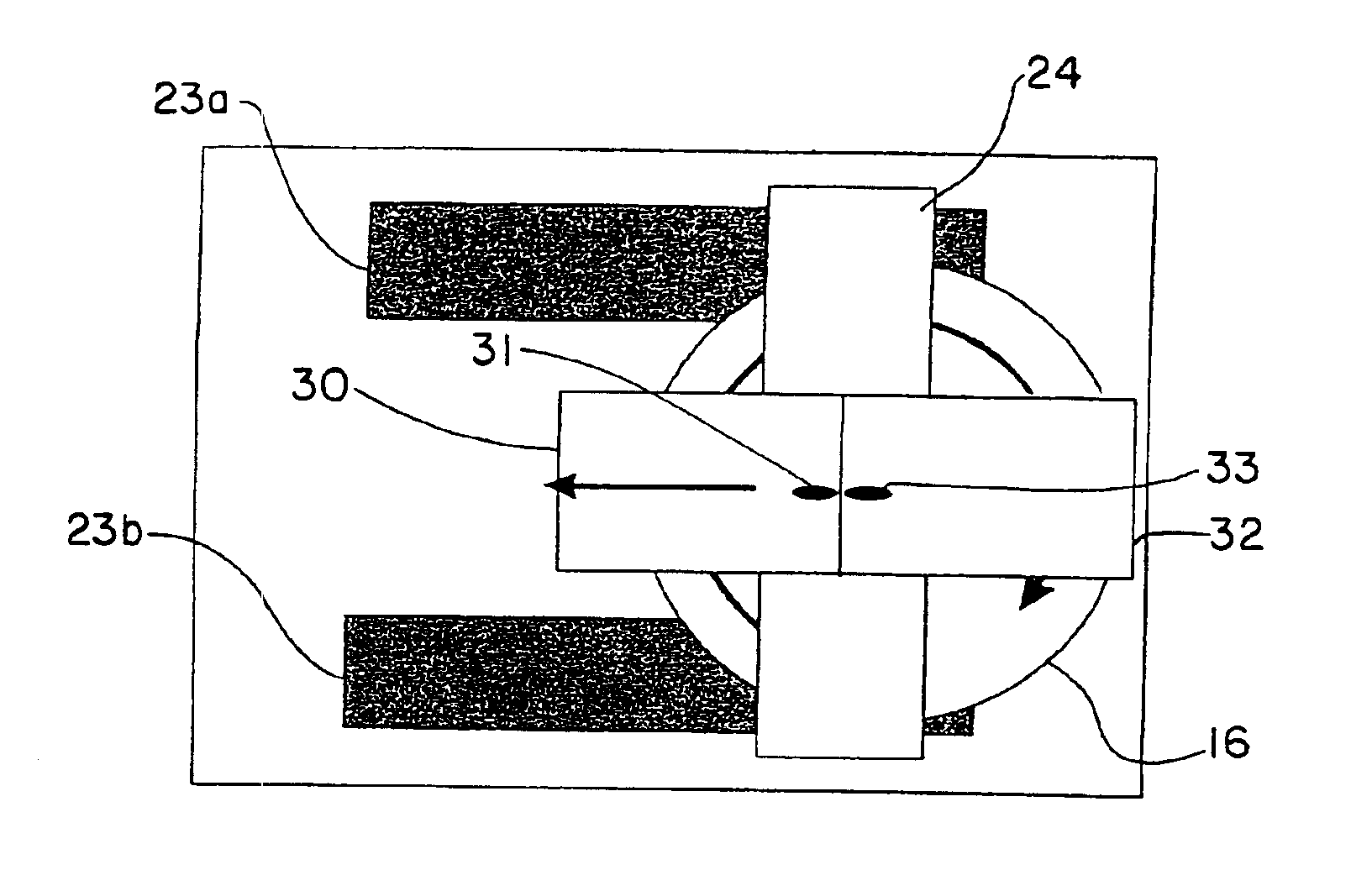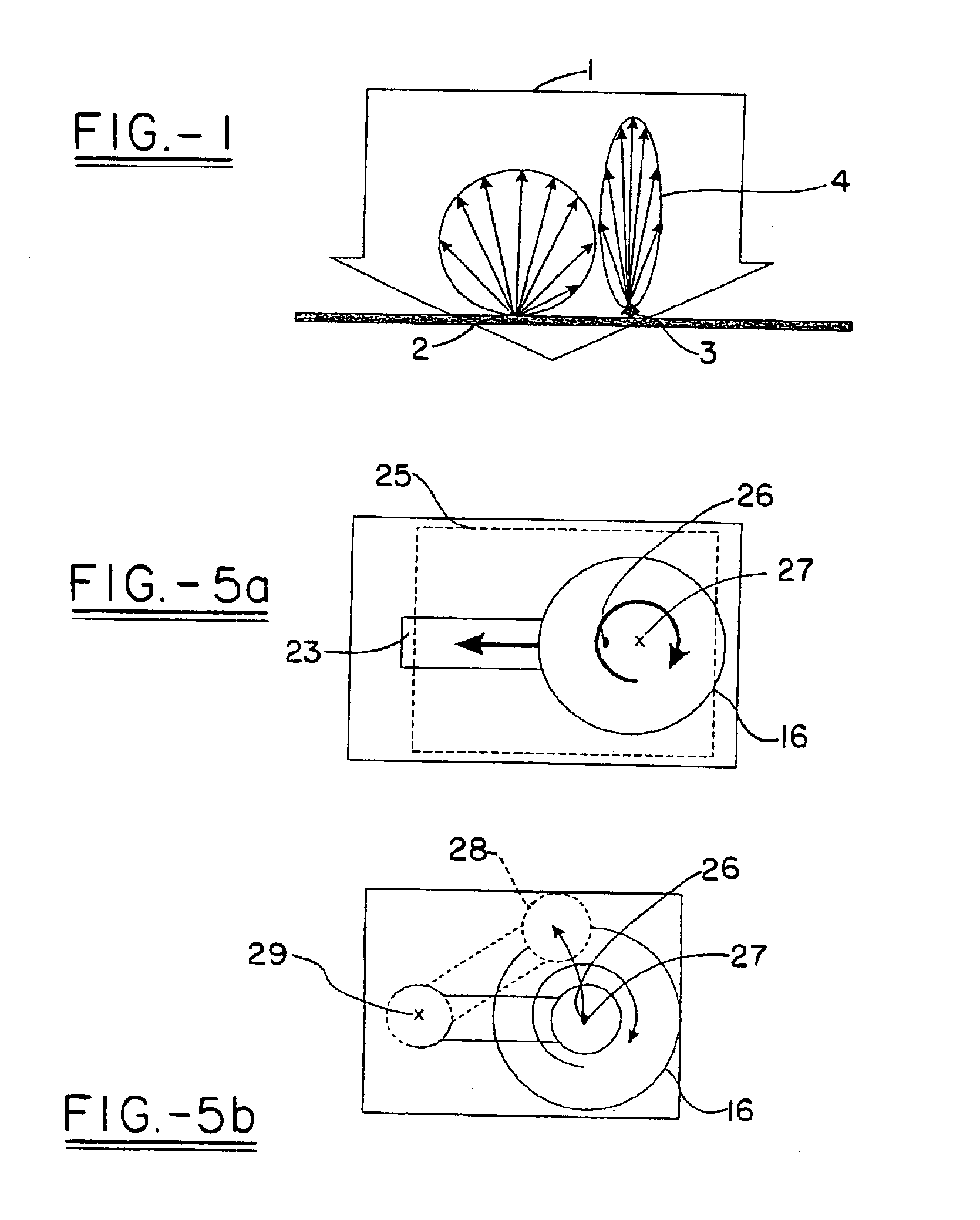Device for measuring surface defects
a technology for measuring devices and defects, applied in liquid/fluent solid measurement, instruments, machines/engines, etc., can solve problems such as impairing measuring accuracy, affecting the accuracy of measuring, and particularly sensitive apparatuses to small particles
- Summary
- Abstract
- Description
- Claims
- Application Information
AI Technical Summary
Benefits of technology
Problems solved by technology
Method used
Image
Examples
Embodiment Construction
[0047]FIG. 1 shows the differing scatter characteristics of particles of differing sizes. Incident light 1 falls on a small particle 2 as well as on a large particle 3. A particle is considered small when its size is much smaller than the wavelength of the incident light 1. A particle is considered large when its size is comparable to the wavelength of the incident light 1 or even greater. The scatter characteristics of small particles 2 and large particles 3 differ in so far as the small particle 2 scatters in isotropic manner into the space, while the large particle 3 generates strong backscattering.
[0048]FIG. 2 shows an optical measuring system for the detection of large particles in the form of a measurement block 10 for measuring samples such as wafers 16. The wafer 16 is supported by a sample holder (wafer chuck) 17 which is caused by a rotation motor 18 to rotate around the axis 27 perpendicularly to the wafer surface 16. The arrows indicate the possible directions of movemen...
PUM
| Property | Measurement | Unit |
|---|---|---|
| depth | aaaaa | aaaaa |
| surface defects | aaaaa | aaaaa |
| optical measuring | aaaaa | aaaaa |
Abstract
Description
Claims
Application Information
 Login to View More
Login to View More - R&D
- Intellectual Property
- Life Sciences
- Materials
- Tech Scout
- Unparalleled Data Quality
- Higher Quality Content
- 60% Fewer Hallucinations
Browse by: Latest US Patents, China's latest patents, Technical Efficacy Thesaurus, Application Domain, Technology Topic, Popular Technical Reports.
© 2025 PatSnap. All rights reserved.Legal|Privacy policy|Modern Slavery Act Transparency Statement|Sitemap|About US| Contact US: help@patsnap.com



